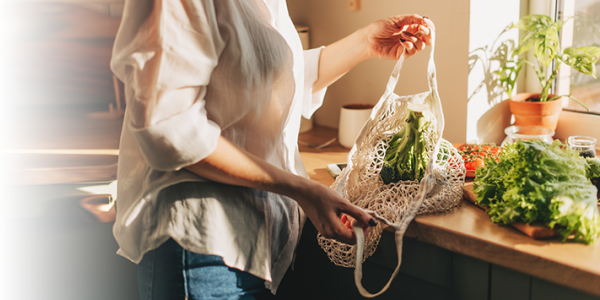
The Annual Dirty Dozen and Clean 15 list helps you to determine when you should splurge for organic produce and when you can save on your weekly trips to the market.
Every year, the US Department of Agriculture and US Food and Drug Administration test a variety of fruits and vegetables for more than 250 different pesticides. The Environmental Working Group (EWG) then examines the data on more than 47,000 samples of nonorganic fruits and vegetables.
This year 46 fruits and vegetables were studied (the list rotates a bit each year). Although traces of pesticides were found in virtually all fruits and vegetables, emphasis was placed on the 209 most harmful chemicals. Those items with the highest levels of harmful pesticides land on the "Dirty Dozen" list, which means caution should be taken when buying and consuming these items. This doesn’t mean that those fruits and vegetables are off limits; rather you may want to consider buying organic versions, particularly if you consume them regularly.
On the other hand, every year a list of "Clean 15" items is also released. These fruits and vegetables have low levels of pesticides, and often contain thick skins that are peeled – further reducing the pesticide residue. The conventionally farmed types of these items are generally safe to buy and consume.
Since organic produce is usually considerably more expensive than conventionally raised, being smart about how you shop is important for your pocketbook as well as your health. Let this list be your guide next time you’re in the grocery store. For a downloadable version you can print and keep handy for reference.
The 2024 Dirty Dozen List
When possible, especially if consumed frequently, buy organic for these items. Remember most farmers markets are great sources for delicious organic produce at peak ripeness – and it's a great way to support local farmers! These items are loaded with vitamins, minerals and fiber, so if you can’t afford organic, don’t skip them! Simply rinse the items under rushing water, then soak in warm water for a minimum of one minute. Although the peel often contains a great deal of nutrients (such as in apples), consider peeling items if you consume them frequently.
- Spinach
- Strawberries
- Kale, Collard and Mustard Greens
- Grapes
- Peaches
- Cherries
- Nectarines
- Pears
- Apples
- Blackberries
- Blueberries
- Potatoes
The 2025 Clean 15 List
Conventionally farmed versions of these items are generally safe to consume. Of course, if you have the option of buying them from a local farmer’s market or raising your own – that’s even better! And don’t forget, even if they are organic, it’s still important to rinse them well before consuming.
- Pineapple
- Sweet Corn, Fresh and Frozen
- Avocados
- Papaya
- Onion
- Sweet Peas (frozen)
- Asparagus
- Cabbage
- Watermelon
- Cauliflower
- Bananas
- Mangoes
- Carrots
- Mushrooms
- Kiwi
Other Items Tested
These 20 items were also included in the test but landed in between the Dirty Dozen and Clean 15 lists. Use your best judgment when purchasing these items and follow the Dirty Dozen guidelines for washing them well to remove as many pesticides as possible.
- Broccoli
- Cantaloupe
- Sweet Potatoes
- Snap Peas
- Eggplant
- Grapefruit
- Oranges
- Raspberries
- Summer squash
- Tomatillos
- Cherry tomatoes
- Tomatoes
- Plums
- Winter squash
- Lettuce
- Celery
- Cucumbers
- Tangerines
- Green beans
- Bell and Hot Peppers
This article appeared in the May 2024 edition (and was updated in June 2025) of the HealthPerks newsletter.

